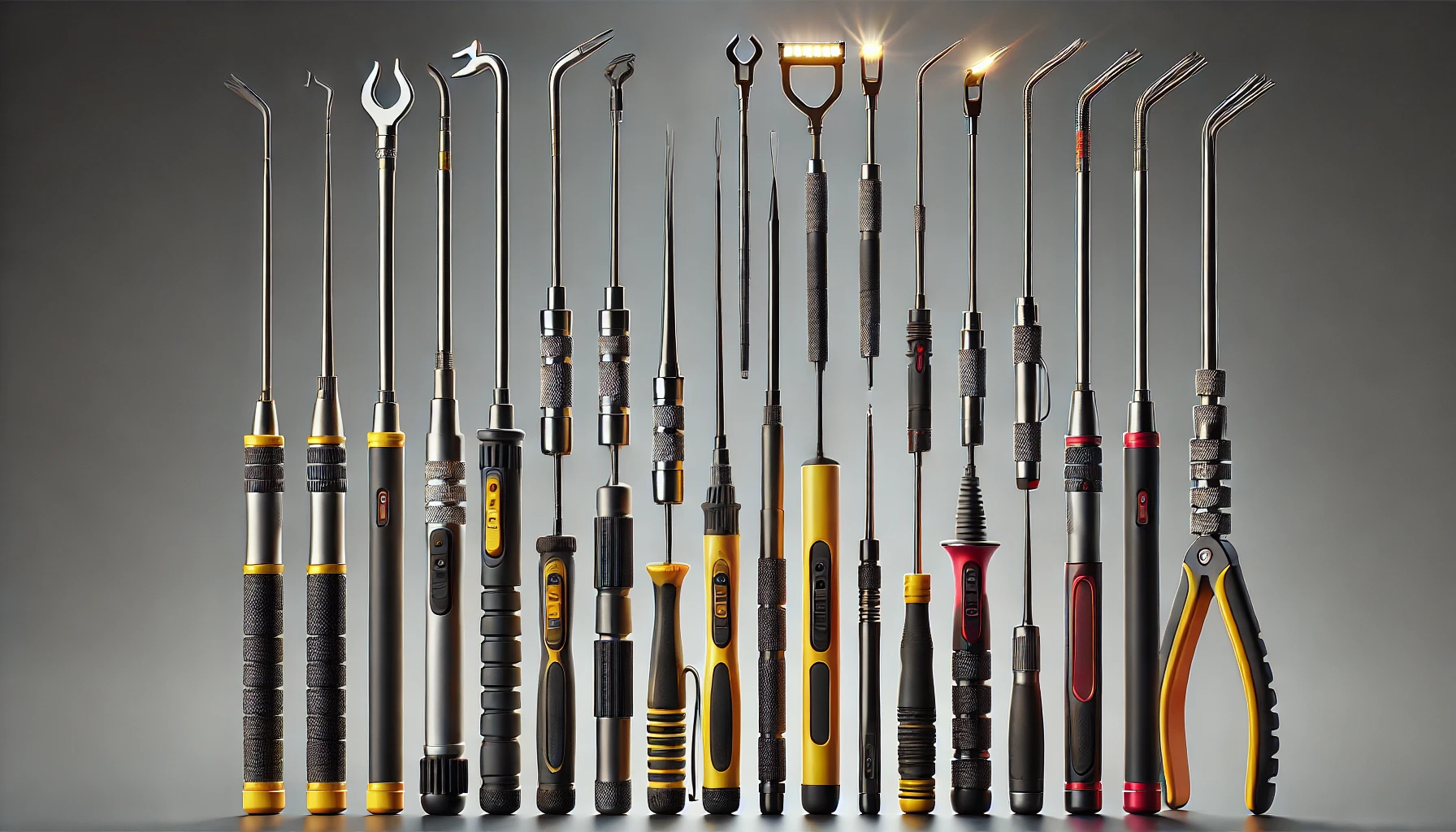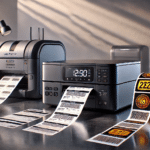
Introduction
When it comes to handling small, delicate components, pick up tools are high-performance and precision tools that come into play. These small, lightweight tools significantly enhance productivity and efficiency in various industries and tasks. Understanding their benefits, types, and applications is critical for choosing the right tool for the job. This article covers the benefits, types, and diverse applications of pick up tools, shedding light on how they can boost efficiency and accuracy in various settings.
What are Pick Up Tools? A Brief Introduction
They are also called grabber tools, are specialised devices designed to pick and hold objects firmly in hard-to-access or confined spaces. These handheld tools retrieve small, delicate items that are difficult to handle or grasp with bare hands. A pick up tool features a set of moving jaws (claws) for non-magnetic objects or has magnetic tips at the end to manipulate the magnetic objects. Depending on the type of tools and environment, these grabbers can pick up small parts, screws, nails, bolts, or other items with strong hold and precision without causing significant damage.
Pick Up Tool Sets: A Collection of Quality Grabber Tools
Pick up tool sets are a comprehensive collection of pick-up tools and extendable rods that offer a versatile solution for reaching and retrieving objects in tight spaces or at a distance. These sets typically include a variety of grabber tools tailored for specific applications. From reaching high shelves to picking up small items from the floor, having a pick-up tool set can save time and effort while preventing injuries.
Notable Benefits of Pick-Up Tools Explained
Pick-up tools, whether magnetic or have gripping mechanisms, offer a variety of benefits in various facilities. Some of the notable advantages include:
Improved Safety and Ease of Accessibility
Pick up tools can precisely retrieve objects from narrow crevices, high places, under furniture, hazardous environments, or in deep recesses that would otherwise be inaccessible. Using these hand tools also enhances safety by minimising the risk of cuts, scrapes, or other injuries instead of using your hand. Additionally, by avoiding unnecessary handling, you can reduce damaging delicate or fragile objects.
Efficiency and Time-Saving Benefits
Grabber tools streamline tasks by quickly and easily retrieving lost or dropped items, speeding up tasks like repair or assembly. Magnetic pickup tools, in particular, can rapidly retrieve metallic objects, saving time and effort.
Versatility with Improved Precision
Due to their varied sizes and shapes, pick up sticks are suitable for a wide variety of tasks. They can handle precision instruments in professional electronics manufacturing and robustly handle them in homes, workshops, and garages.
Cost-Effective and Durable
Pick-up tools are generally affordable, making them a practical investment. Crafted from durable materials, they can withstand regular use and harsh conditions.
Most Popular Types: Finding the Right Fit for Your Needs
Grabber tools are classified into several types, each with unique capabilities to suit different needs. Some of the common types include:
Claw Pick Up Tools
Claw-style pick-up tools come with a flexible, extendable arm with a gripping claw at the end. These are particularly useful for non-metallic items, as the claw can grab and hold objects that magnets cannot pick up.
Magnetic Pick Up Tools
These tools feature a magnetised tip (mostly a neodymium magnet) designed to pick up metallic objects such as screws, nails, nuts, and bolts. They are handy for mechanics, electricians, and construction workers who frequently handle metal items. A magnetic pick up tool avoids damage to equipment and is beneficial in scenarios where equipment damage is a concern.
Telescoping Pick Up Tools
A telescopic pick up tool features an extendable or retractable arm, allowing the user to adjust the length according to the task at hand. These tools can be either magnetic or claw-style, providing flexibility in reaching further into tight spaces. Telescopic grabbers are similar to large pick up tools; however, they differ in terms of retractable or folding arms.
LED Pick Up Tools
They are advanced grabbers equipped with a built-in LED (light) for working in dark or poorly lit areas. This feature helps users see the retrieving objects and ensures greater precision when handling small or delicate parts.
Flexible Pick Up Tools
Also called bendable or bent curve pick up tools, these precision grabbers feature a flexible, bendable shaft. The shaft can easily reach around corners or navigate irregular shapes to retrieve objects. They are ideal for working inside engines, pipes, or other confined spaces where rigidity may be a problem.
Vacuum vs. Suction Cup Pick UP Tool
A vacuum pick up tool uses a vacuum pump to hold the objects without touching them directly. These tools are ideal for delicate, sensitive items, such as electronic components. On the other hand, a suction cup pick-up tool features a simple handle and a suction cup to grasp and lift objects with flat surfaces securely. These tools are often used for lifting glass panes, tiles, or smooth panels and work best on non-porous, smooth surfaces.
Applications of Pick Up Tools: A Brief Look to Their Versatility
Pick-up tools are indispensable for both professionals and DIY enthusiasts who frequently work in environments where small objects can become lost in hard-to-reach places. Some of their application areas include:
- Automotive Industry: Grabber tools retrieve small parts in automotive sectors, such as screws or bolts, that fall into tight engine compartments. Magnetic models are beneficial for collecting metallic components quickly.
- Electronics and Precision Work: These grabbers are indispensable in the electronics industry, where workers handle small, delicate components. Tweezers, vacuum tools, and precision mechanical claws help pick up and place sensitive electronic parts without damaging them.
- Manufacturing and Assembly Lines: In manufacturing, grabber tools help workers retrieve and handle parts during the assembly process. They allow workers to maintain productivity without interrupting the workflow to manually retrieve dropped items.
- Household Use and Maintenance: Homeowners and handypersons can use these precision tools to retrieve objects from hard-to-reach places, such as under furniture or behind appliances. They are also helpful in handling small items during DIY projects or repairs.
- Medical and Laboratory Settings: Precision and hygiene are critical in medical and laboratory environments. Grabber reachers, such as tweezers and vacuum devices, can handle specimens, chemicals, or small medical instruments with care. They minimise contamination and ensure accuracy.
Final Thoughts
Pick-up tools are small yet high-performance devices offering convenience, safety, and precision. Multiple types are available, ranging from magnetic to flexible claw designs. These tools serve different purposes in automotive work, home maintenance, and medical environments. Investing in and having a reliable pick-up tool in your toolkit ensures that no small item remains out of reach.





















